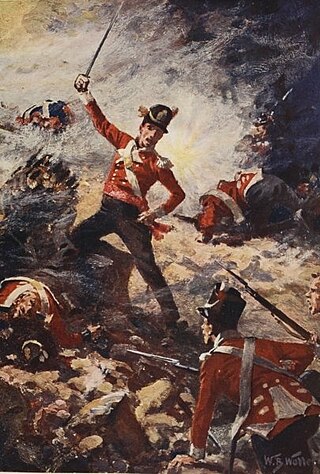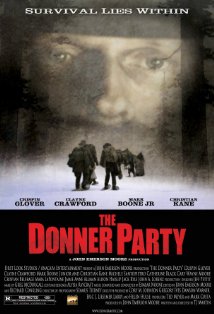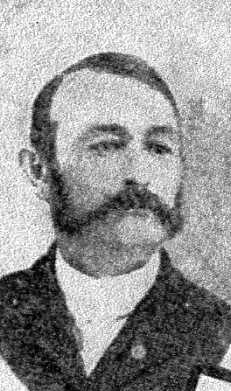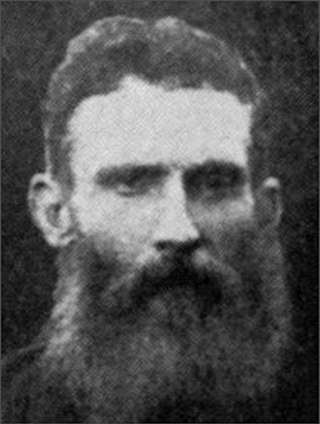
A forlorn hope is a band of soldiers or other combatants chosen to take the vanguard in a military operation, such as a suicidal assault through the breach of a defended position, or the first men to climb a scaling ladder against a defended fortification, or a rearguard, to be expended to save a retreating army, where the risk of casualties is high. Such men were volunteers motivated by the promise of reward or promotion, or men under punishment offered pardon for their offenses, if they survived.
The 8th Missouri Infantry Regiment was an infantry regiment in the Union army during the American Civil War. Among its early leaders were Morgan Lewis Smith and Giles Alexander Smith, both of whom later became generals.

The 4th West Virginia Infantry Regiment was an infantry regiment that served in the Union Army during the American Civil War.
The 97th Regiment Illinois Volunteer Infantry was an infantry regiment that served in the Union Army during the American Civil War. It was instrumental in the Federal campaign to reclaim the Mississippi River for the Union, participating in the siege of Vicksburg and battles leading up to it in Mississippi. Moving down the river after the siege, it participated in efforts to wrest control of the bayou area, then retake Mobile Bay, culminating in the bloody Battle of Fort Blakeley hours after Lee's surrender at Appomattox.

The 55th Illinois Volunteer Infantry Regiment was an infantry regiment that served in the Union Army during the American Civil War. The regiment is sometimes referred to as the Canton Rifles or the Douglas Brigade 2nd Regiment.
Berkeley most often refers to:

The Forlorn Hope is a science fiction novel by David Drake.
Hopeton is an unincorporated community in Merced County, California. It is located 10.5 miles (17 km) north-northeast of Atwater, at an elevation of 184 feet.
The 37th Ohio Infantry Regiment was a Union Army regiment, composed of German-Americans, in the American Civil War. It was organized in the fall of 1861, under Colonel Edward Siber, and served in the Kanawha Valley until December 1862. It joined the Union army operating against Vicksburg, Mississippi, in January 1863, and participated in the various engagements of the siege. After the fall of that stronghold it was moved across Tennessee from Memphis to Chattanooga, and took part in operations of the 15th Corps, subsequent to, and at the taking of Atlanta, Georgia. It then followed the fortunes of that well-known corps until the reaching of Washington, D.C. From Louisville, Kentucky, it went with the 2nd Division of the Corps to Little Rock, Arkansas, and was there mustered out in August 1865.

The Donner Party is a 2009 American period Western drama film written and directed by Terrence Martin, and starring Crispin Glover, Clayne Crawford, Michele Santopietro, Mark Boone Junior, and Christian Kane. It is based on the true story of the Donner Party, an 1840s westward traveling group of settlers headed for California. Becoming snowbound in the Sierra Nevada mountains, with food increasingly scarce, a small group calling themselves "The Forlorn Hope" turned to cannibalism. The Forlorn was the working title for the film.

Charles W. Rundle was a Union Army soldier in the American Civil War and a recipient of the United States military's highest decoration, the Medal of Honor, for his actions during the Siege of Vicksburg.
The 30th Ohio Infantry Regiment was an infantry regiment in the Union Army during the American Civil War.
The 116th Illinois Volunteer Infantry was an infantry regiment in the Union Army during the American Civil War.
The 83rd Indiana Infantry Regiment, sometimes called 83rd Indiana Volunteer Infantry Regiment, was an infantry regiment that served in the Union Army during the American Civil War.

Newton Thomas Gould was a Union Army soldier during the American Civil War. He received the Medal of Honor for gallantry during the Siege of Vicksburg on May 22, 1863.

Sampson Harris was a Union Army soldier during the American Civil War. He received the Medal of Honor for gallantry during the Siege of Vicksburg on May 22, 1863.
John F. Link Sr. was an American film editor from the 1930s through the 1960s. Born in Alabama on March 22, 1901, he began editing in 1930. He began editing film shorts, and from 1930 to 1932 he edited almost 20. Link was given his first opportunity to edit a feature film in 1932, with Carnival Boat, directed by Albert Rogell, and starring Bill Boyd and Ginger Rogers. In his 30-year career, he would edit over 30 films, with the highlight of his career would be the 1943 classic, For Whom the Bell Tolls, starring Gary Cooper and Ingrid Bergman. Link, along with co-editor Sherman Todd, received an Academy Award nomination for their work on this film.
Forlorn Hope was the name given by a group of seven men to an open boat in which they sailed and rowed from Adam Bay, Northern Territory to Champion Bay, Western Australia, a distance of some 2,000 miles (3,200 km) in May–August 1865.

The sinking of MV Conception occurred on September 2, 2019, when the 75-foot (23 m) dive boat caught fire and eventually sank off the coast of Santa Cruz Island, California, United States. The boat was anchored overnight at Platts Harbor, a small undeveloped bay on the island's north shore, with 33 passengers and 1 crew member asleep below decks when a fire broke out shortly after 3 a.m. Five crew members, whose sleeping quarters were on the top deck, survived while everyone else on board died. The crew members were forced by the fire to jump overboard but not before placing an initial mayday call to the Coast Guard and attempting to alert the passengers. The crew retrieved the Conception's skiff and motored to a nearby boat where a second radio dispatch was made. The rescue and recovery operations were coordinated by the United States Coast Guard.








